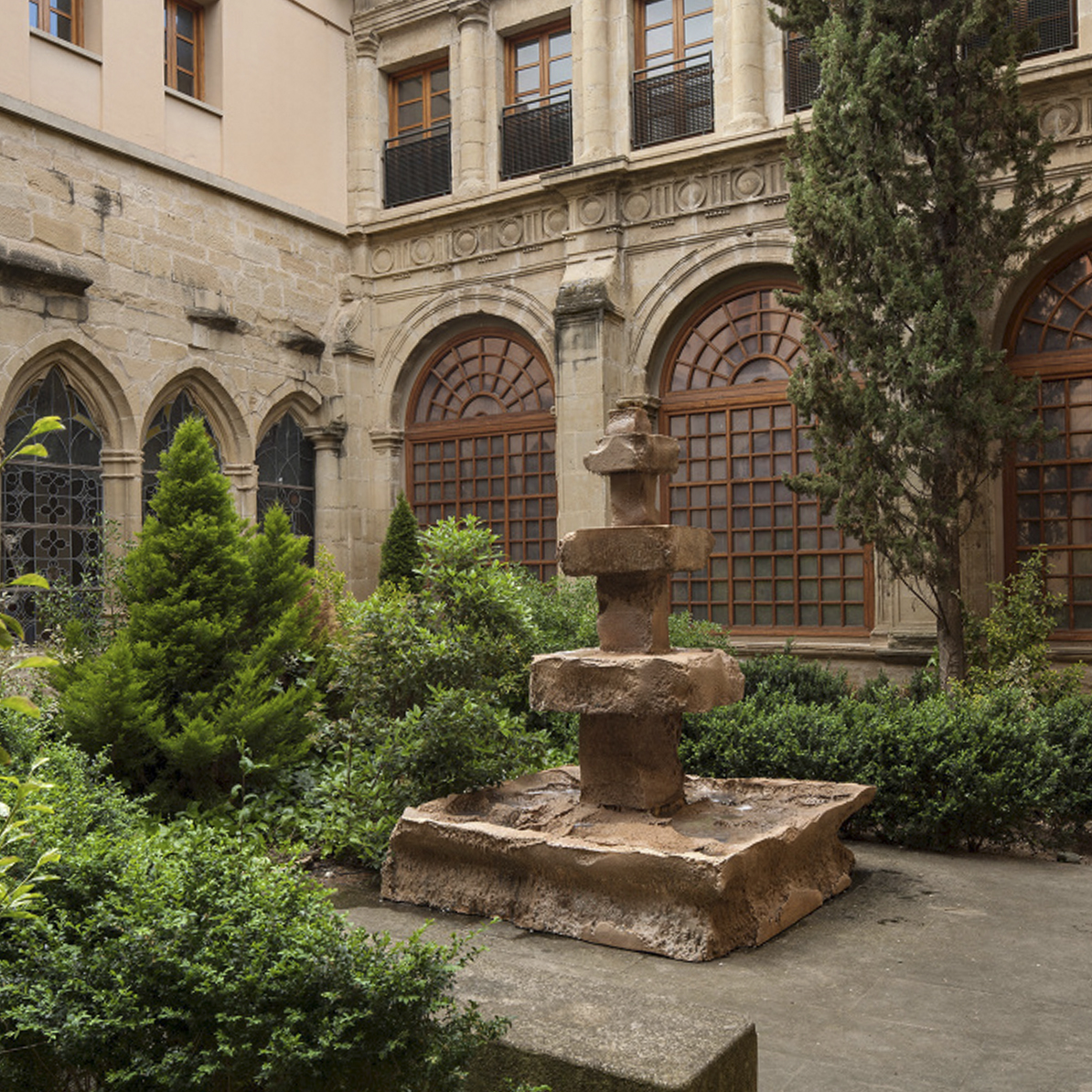Side Gallery
Side Gallery
WishlistFollow
Follow
RESTORATION OF THE CLOISTERS OF SANTA MARÌA DE PALACIO (2017)
LOGROÑO
SEPT 3-6 2017
On the occasion of the third Concéntrico, a festival of architecture and design held in Logroño, La Rioja in Spain, the Barcelona based architect and designer Guillermo Santomà was commissioned to restore the patio of the cloister at the church Santa Maria de Palacio. Represented by Side Gallery, Santomà proposed to fictionally complete the renovations carried out by Gerado Cuadra from 1988 to 1966. As a designer whose work is defined by material transformations, Guillermo was able to project his vision for the restoration of the cloister area by re-creating the demolished center piece of the patio; a fountain was erected from the planks of wood he was offered. In true Santomà style, he pulverized the wooden boards, and through the introduction of other substances generated a series of monolithic pieces, which when molded and mounted on top of each other gave form to a stone like fountain that seemed to grow from the surrounding architecture, generating the illusion that it had always belonged to the courtyard of the Cloisters of Santa María de Palacio.



"Guillermo is aware of the importance of the past in order to create the future"
The cloister itself is a classicist piece, the first restoration of the fountain taking place in 1550. It was then demolished in 1701, when reinforcement work needed to be done on the pillars behind the transept and their transverse arch, which was threatening to destroy the steeple. Santomà modeled his construction on the sketches dating back to 1701 just before the disassembling of the fountain. As a designer, Guillermo is aware of the importance of the past in order to create the future, “we are part of this historic line, we have a past and we must continue it”, he stated. Time for Santomà is not chronologic but intertwined, he uses the contemporary to connect the past and the future, and that is exactly what he did with the creation of the Fountain, he returned the central piece of the cloister after two centuries, respecting it’s past life through form, while honoring the present and challenging the future through material experimentation.